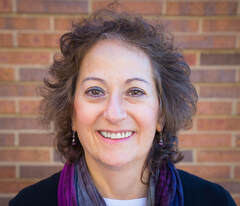A Green Witch’s Yuletide
By Tudorbeth
/ 12 December, 2025
Winter is the time of year that gardens and the earth sleep, but it also brings festive magic and nature...
Read More
 Elise Brenner (Pronouns: she/her), PhD, is an Associate Professor in the Department of Public Health at Simmons University in Boston and is an instructor in the Department of Anthropology at Bridgewater State University in Bridgewater, Massachusetts. Brenner is a Reiki Master Practitioner & Teacher, Mindfulness Meditation Teacher is committed to wellness equity in all of the services she provides. The owner of Brenner Reiki Healing in Newton, Massachusetts, Elise provides comprehensive training in all levels of Reiki, having trained physicians, nurses, social workers, physical therapists, teachers, and people of all ages and backgrounds. Brenner has provided Reiki training for staff at Boston’s Beth Israel Deaconess Medical Centre staff, Edith Nourse Rogers Veterans Administration Hospital in Bedford, MA, and Tufts Medical Centre in Boston.
Nancy Spatz, MD, Reiki Master Teacher, graduated from Boston University School of Medicine in 1990. Nancy's training continued at Beth Israel Hospital-Harvard Medical School, where she completed her Psychiatry training in 1994.
Elise Brenner (Pronouns: she/her), PhD, is an Associate Professor in the Department of Public Health at Simmons University in Boston and is an instructor in the Department of Anthropology at Bridgewater State University in Bridgewater, Massachusetts. Brenner is a Reiki Master Practitioner & Teacher, Mindfulness Meditation Teacher is committed to wellness equity in all of the services she provides. The owner of Brenner Reiki Healing in Newton, Massachusetts, Elise provides comprehensive training in all levels of Reiki, having trained physicians, nurses, social workers, physical therapists, teachers, and people of all ages and backgrounds. Brenner has provided Reiki training for staff at Boston’s Beth Israel Deaconess Medical Centre staff, Edith Nourse Rogers Veterans Administration Hospital in Bedford, MA, and Tufts Medical Centre in Boston.
Nancy Spatz, MD, Reiki Master Teacher, graduated from Boston University School of Medicine in 1990. Nancy's training continued at Beth Israel Hospital-Harvard Medical School, where she completed her Psychiatry training in 1994. After witnessing the ongoing hardships that people experience with medical and emotional illness, Nancy found that the combination of her medical knowledge and Reiki practice helped people calm the mind, settle the body, and heal. Nancy's care for others became the impetus to get the word out so all of us can experience the benefits of Reiki self-practice.
The book is available for purchase here.
After witnessing the ongoing hardships that people experience with medical and emotional illness, Nancy found that the combination of her medical knowledge and Reiki practice helped people calm the mind, settle the body, and heal. Nancy's care for others became the impetus to get the word out so all of us can experience the benefits of Reiki self-practice.
The book is available for purchase here.

Join the Academy and learn from some of the best spiritual
and wellbeing teachers in the world
Join the Academy and learn from some of the best spiritual
and wellbeing teachers in the world
Join the Academy and learn from some of the best spiritual
and wellbeing teachers in the world
